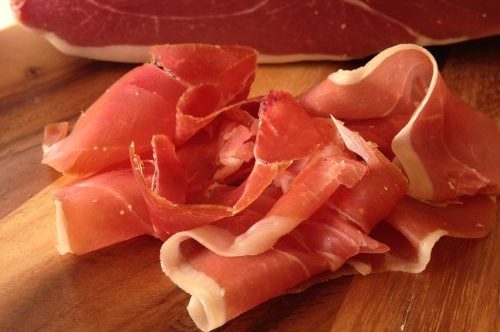Cured meats are a huge and fundamental component of the Italian food culture!
You might have heard of the uber famous Prosciutto di Parma before, right? Well, that is just one of the hundreds of varieties of cured meats produced in Italy. Known under the term of salumi, it includes anything from prosciutto (ham) to salami and salsicce.
Aaron Foster, “A salame is a salume, but a salume is not necessarily a salame.”
There is such a wide selection out there you are not even aware of yet… but we are here to open your eyes and introduce you to the fantastic world of Salumi!


Salumi-making was born essentially from a necessity. Food curing is in fact an ancient tradition, especially with smoked meats and salt-cured meats. In the past people didn’t have fridges or the food preserving technologies we have today. Their way of extending the life of some products was covering them in salt, or smoking them. By doing this they realised that the meat not only was preserved but also it acquired an additional taste. It was after this realisation that people started experimenting with spices and aromas to create the delicious salumi we are talking about today.
Let’s get to know more about these meats and which are the most famous Italian varieties – there are a few you might not have heard of before!
- A single cut of meat can take on drastically different forms and flavors depending on where in Italy it’s made.
- Prosciutto di Parma (Emilia Romagna) is made with only two ingredients: meat and salt.
- When meat is dry-cured, it loses 30 percent of its weight in water !
- Prosciutto San Daniele (Friuli) is the second most famous Italian ham abroad.
- Both San Daniele and Parma ham need to be dry-cured for at least 13 months.
- There are two types of prosciutto (ham) cotto, or cooked and crudo or raw – we’re not really eating raw meat here though, remember these meats are actually dry-cured.

Mortadella di Bologna
- During the process of curing, it’s tradition to keep the hams hung in cellars to mature and dry, for better results in flavour.
- Never ever freeze either Parma or San Daniele – strict D.O.P. rules ban freezing these cured meats. the risk is an alteration in quality and flavour. It’s best to buy them and eat them straight away!
- Mortadella, is a unique Italian product, similar to cooked ham but packed a smoother and hammy flavour.
How do you eat Mortadella? Enjoy it thinly sliced on its own or on a slice of warm pizza bianca, which is basically just white pizza base seasoned with salt. The warmth of the pizza will make the mortadella melt a bit and release all the good delicious fatty bits!
 Speck is a type of salt-cured prosciutto crudo. Typical of the north of Italy, it is usually seasoned with spices like peppercorns, juniper berries, and rosemary and smoked before it is left to dry for a few months.
Speck is a type of salt-cured prosciutto crudo. Typical of the north of Italy, it is usually seasoned with spices like peppercorns, juniper berries, and rosemary and smoked before it is left to dry for a few months.- ‘Nduja – pronounced “en-DOO-ya” – is a spreadable spicy salami produced in Calabria. It’s not your average cured meat for its soft consistency. Most people use it as a ready-made pasta topping, or just spread on a slice of toasted artisan bread.
- Another spreadable salume is Ciauscolo, typical of the Marche region, in the centre of Italy. It’s less spicy than it’s Calabrian cousin and it is seasoned with garlic and black pepper, and smoked over juniper. It’s great paired with a sweet soft cheese on a slice of bread.
SaveSaveSaveSave


